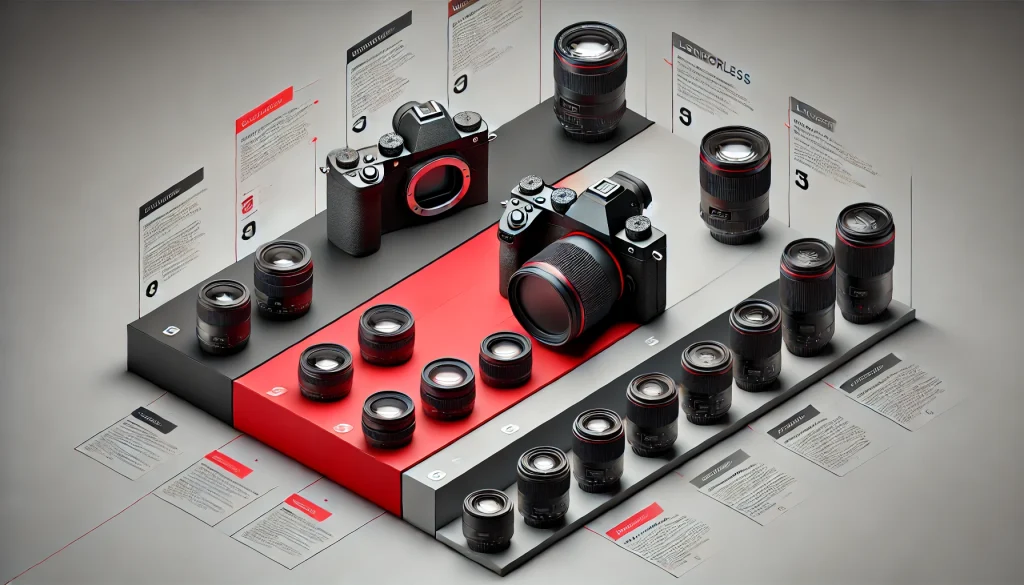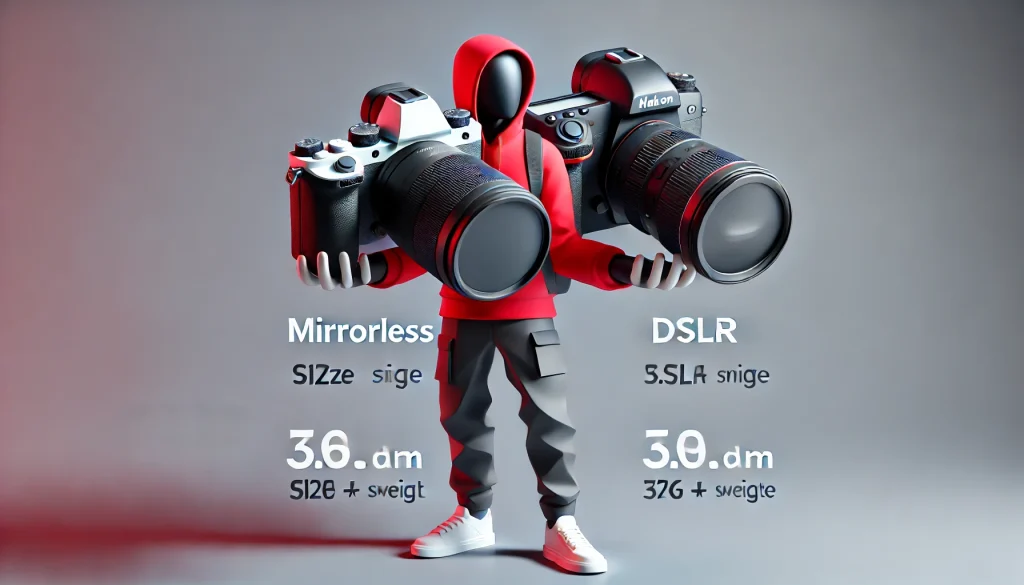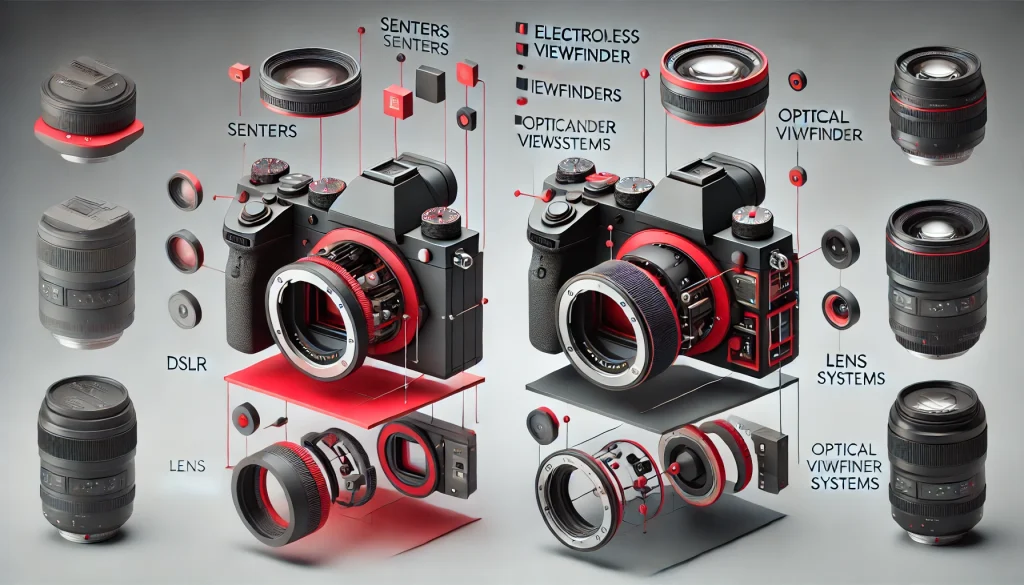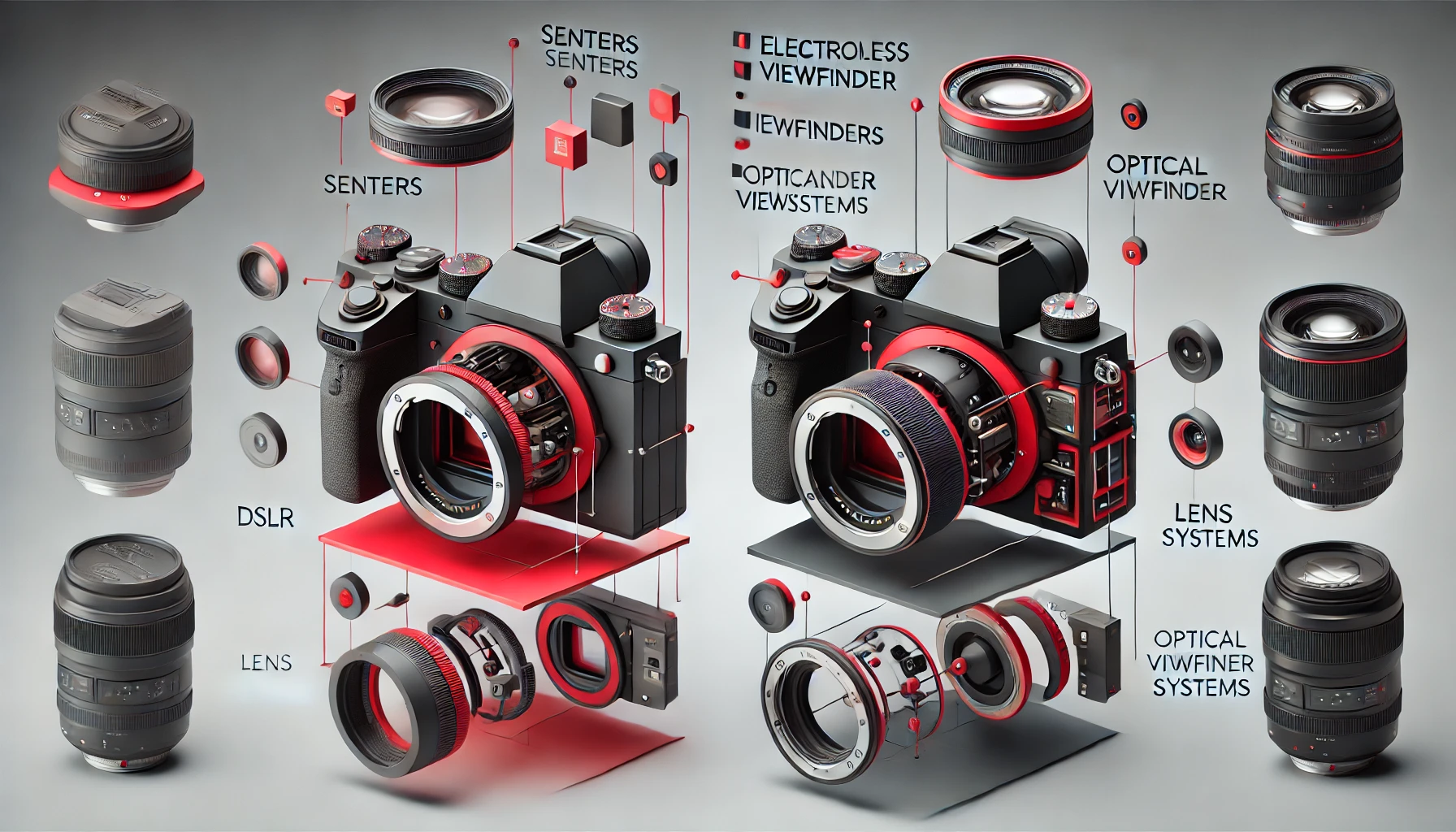
Introduction
Photography enthusiasts and professionals alike are often faced with the challenging decision between DSLR and mirrorless cameras. In recent years, technological advancements in both types have made the decision even more difficult. The latest updates have pushed the boundaries of image quality, autofocus performance, and portability, making both mirrorless and DSLR cameras appealing to photographers of all levels.
Understanding the core differences between these two camera types is essential to making an informed choice. Whether you’re a seasoned professional or an amateur photographer, the right camera will elevate your craft and streamline your shooting experience. In this post, we’ll take an in-depth look at mirrorless and DSLR cameras, comparing their features, pros, cons, and performance to help you choose the perfect one for your needs.
Overview of Mirrorless vs DSLR Cameras
When it comes to choosing a camera, photographers typically debate between mirrorless and DSLR models. Both camera types have carved out strong niches in the photography world. DSLR (Digital Single-Lens Reflex) cameras have been the dominant force for years, known for their optical viewfinders, rugged build, and superior battery life. On the other hand, mirrorless cameras have made significant strides in recent years, offering faster autofocus systems, compact designs, and the ability to preview images through electronic viewfinders (EVF) before snapping the shot.
Mirrorless cameras, as the name suggests, do not have a mirror mechanism. Instead, light passes directly through the lens to the sensor, resulting in quieter operation and more compact bodies. Meanwhile, DSLRs use a mirror to reflect light into an optical viewfinder, providing a real-time view of your subject. Both camera types have their distinct benefits, depending on what you value most in your photography.
Pros and Cons of Mirrorless vs DSLR Camera
| Pros of Mirrorless Cameras | Cons of Mirrorless Cameras |
|---|---|
| Portability: Smaller and lighter, making them ideal for travel and street photography. | Battery Life: Shorter battery life due to continuous use of the electronic viewfinder or LCD screen. |
| Faster Autofocus: Advanced phase-detection sensors enable quick and accurate focus, especially on moving subjects. | Limited Lens Selection: Fewer lenses available compared to DSLR systems that have been around longer. |
| Silent Operation: Quiet shooting, ideal for discreet environments like weddings or wildlife photography. | Learning Curve: Controls and EVF may take time for long-time DSLR users to adapt to. |
| Live View and EVF: Real-time preview of shots, showing how exposure and white balance changes will affect the image. | Price Point: High-end models, lenses, and accessories can still be expensive. |
| Advanced Features: In-body stabilization helps reduce camera shake, especially in low-light conditions. |
In-Depth Analysis of Mirrorless vs DSLR Performance

When it comes to performance, both camera types offer distinct advantages, depending on your photography style. Let’s break down their performance into various categories:
Design and Build
Mirrorless cameras are renowned for their compact and lightweight design. Without the mirror mechanism and optical viewfinder, manufacturers can reduce the camera body size. This makes mirrorless systems ideal for photographers who need portability, such as travel photographers. On the other hand, DSLRs tend to be bulkier and heavier, which may appeal to photographers who prefer a more substantial camera body that feels robust in hand. Additionally, DSLR bodies are often more weather-sealed, offering enhanced durability in harsh environments.
Autofocus and Shooting Speed
Mirrorless cameras have revolutionized autofocus performance, especially in the realm of continuous autofocus for moving subjects. Many modern mirrorless models feature hybrid autofocus systems that combine contrast detection and phase detection on the sensor. This makes them excellent for action photography. DSLRs, while fast, generally rely on phase-detection autofocus when using the optical viewfinder, which can sometimes lag behind mirrorless systems in tracking fast-moving subjects.
Image Quality
Both mirrorless and DSLR cameras are capable of delivering exceptional image quality. They often use similar sensors and image processors, meaning the final output can be virtually indistinguishable in most situations. However, mirrorless cameras typically offer superior video performance due to their advanced autofocus capabilities and lack of a mirror, which eliminates issues like “mirror slap” during video recording. DSLRs, meanwhile, excel in still photography, particularly when paired with high-end lenses.
Battery Life and Usability
Battery life is one area where DSLRs still have a clear edge. Since they use an optical viewfinder, DSLRs don’t need to power an electronic display during shooting, which conserves battery life. Many DSLRs can shoot thousands of photos on a single charge, whereas mirrorless cameras, with their power-hungry EVFs and LCDs, often require multiple battery changes during a long session.
Customization and Control
DSLRs typically offer more tactile control options, such as additional buttons and dials, which may be preferred by photographers who want to adjust settings quickly without diving into menus. Mirrorless cameras, while improving in this area, often rely more on touchscreen interfaces and fewer physical controls.
Comparison of Mirrorless and DSLR Cameras

When comparing mirrorless and DSLR cameras side by side, it’s clear that both have strengths and weaknesses. For portability and advanced autofocus, mirrorless cameras shine, while DSLRs dominate in battery life, lens selection, and tactile control. Here’s a brief comparison:
- Size and Weight: Mirrorless cameras win with their smaller, lighter designs, making them easier to carry around.
- Lens Selection: DSLRs have the advantage here, with a vast selection of lenses built over decades of use.
- Viewfinder: DSLRs use optical viewfinders, giving a true-to-life image preview, while mirrorless cameras use electronic viewfinders, which can display real-time exposure changes.
- Autofocus Speed: Mirrorless cameras are generally faster in continuous autofocus, while DSLRs are still quite effective in still photography.
- Battery Life: DSLR cameras take the lead with significantly longer battery life.
Conclusion
Choosing between a mirrorless and DSLR camera largely depends on your individual needs as a photographer. Mirrorless systems are ideal for those prioritizing portability, cutting-edge autofocus, and video capabilities. Meanwhile, DSLR cameras offer a more traditional shooting experience with longer battery life and a wider range of lenses. As technology continues to evolve, both systems are likely to improve, making it an exciting time for photography enthusiasts.
Rating
4.5/5 – Both mirrorless and DSLR cameras offer exceptional quality, but mirrorless systems are pushing the envelope with their technological advancements.
Resources
- Digital Camera World. DSLR vs Mirrorless Cameras: How Do They Compare?
- How-To Geek. Mirrorless vs DSLR: Which Camera is Better?
- Photography Life. Mirrorless vs DSLR: Pros and Cons
- TechRadar. DSLR vs Mirrorless Cameras: Which One is Right for You?
- Tom’s Guide. DSLR vs Mirrorless: What’s the Difference? |

Brijesh Gohil is the founder of Tech Brij, A popular Tech Blog which is focused on Tech tips & Buying Guides. You can follow him on Facebook, Twitter, Google + & LinkedIn.

